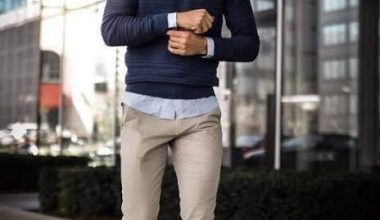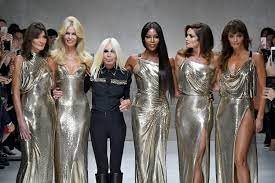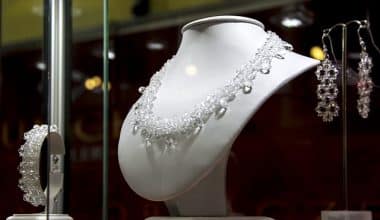Business casual has replaced the suit and tie in today’s workplace. Business casual lets workers be themselves while seeming professional. However, knowing what’s appropriate and what’s not can be hard. This blog post will go over what a business casual dress code is, and we will also go over the dress code policy, the appropriate dress code for men and women, and what to avoid.
Business Casual Dress Code
A business casual dress code is a type of workplace dress code that is less formal than traditional business wear but still looks professional and appropriate for the office environment. It involves wearing modern and casual clothes rather than strict and traditional ones while maintaining a professional and orderly appearance. Business casual attire is broadly defined as a code of dress that blends traditional business wear with a more relaxed style that’s still professional and appropriate style for an office environment.
Examples of Business Casual Dress Code
Business casual is a dress code that is commonly used in professional environments. It is a blend of traditional business attire and more relaxed clothing. The specifics of business casual can vary depending on the company’s culture, industry, and location. Here are some examples of business casual dress codes for both men and women:
Business Casual Dress Code for Women
The business casual dress code for women includes the following:
- Slacks, khaki pants, or black or navy blue dress pants
- Knee-length, mid-length, or maxi skirts
- Mid-length professional dresses
- Short-sleeved or long-sleeved blouses
- Polo shirts, turtlenecks, sweaters, cardigans, vests, jackets, or blazers
- Heeled boots
- Flats, pumps, stilettos, open-toed heels, and closed kitten heels
- Neutral or solid-colored sheath dresses, casual dresses, and skirts that split at or below the knee
What Not to Wear for a Business Casual Dress Code for Women
- Strappy sandals
- Denim, ripped pants, or pants with bold prints, bright colors, or sportswear
- Spaghetti straps, crop tops, or off-the-shoulder shirts or dresses
- Leggings or yoga pants
- Hooded sweatshirts
Business Casual Dress Code for Men
The business casual dress code for men includes the following:
- Polo shirts, collared and/or buttoned shirts, crew neck or V-neck sweaters, or sweater vests
- Dress slacks, chinos, dressy khakis, or corduroys
- Dark-colored men’s dress socks
- Closed-toe shoes like Oxfords, derby shoes, brogues, or monk shoes
- Ties or bow ties are optional
What Not to Wear for a Business Casual Dress Code for Men
- Athletic wear, such as sweatpants or gym shorts
- T-shirts or tank tops
- Shorts
- Sandals or flip-flops
- Baseball caps or other casual hats
It is important to note that business casual dress codes can vary depending on the industry, company culture, and location. Some companies may have a more conservative approach to business casual, while others prefer casual attire. It is always good to consult the company’s dress code policy before dressing for work.
What Not to Wear for Business Casual Dress Code?
In a business casual dress code, there are certain items that you should avoid wearing to maintain a professional appearance.
Here’s a list of what not to wear for both men and women in a business casual dress code:
Women:
- Strappy sandals
- Denim (except for dark-washed jeans without tears or holes)
- Ripped pants or pants with bold prints
- Bright colors
- Spaghetti straps
- Crop tops
- Sportswear
- Leggings
- Off-the-shoulder shirts or dresses
- T-shirts
- Tennis shoes
- Hooded sweatshirts
Men:
- Printed shirts
- Ripped jeans
- Denim
- Sandals
- Boots (except for low-profile loafers or dressier boots)
- Sportswear
- T-shirts
- Tennis shoes
- Hooded sweatshirts
Generally, avoid wearing overly casual or overly formal attire. For example, wearing a suit and tie is too formal for a business casual dress code, while wearing sandals, ripped jeans, or a T-shirt is too casual.
Business Casual Dress Code Policy
A business casual dress code policy is a set of guidelines that define the expectations of what employees should wear to work. The concept of business casual can be vague, and it may vary across industries and countries. Generally, business casual attire is less formal than formal but still requires employees to look professional and well-groomed.
To create a business casual dress code policy, it is essential to be as specific as possible in defining what is expected. Provide a precise definition, examples, and dos and don’ts to ensure employees understand the policy.
Sample of Business Casual Dress Code Policy
Employee Dress Code Policy for [Company Name]
At [company name], we aim to maintain a professional and respectful working environment. Our business casual dress code policy applies to all employees who interact with clients, colleagues, visitors, or members of the public. This policy will help employees present a consistent professional appearance and create a positive impression on customers and colleagues.
Our business casual dress code policy includes the following guidelines:
- Men: Collared shirts, slacks or khakis, loafers, and neat hair styling.
- Women: Smart cardigans, slacks, or jumpsuits, and appropriate hair styling.
- Footwear: No sneakers, flip-flops, or sandals.
- Clothing should be clean, free of holes or tears, and not revealing.
- Offensive or inappropriate clothing designs are not allowed.
- Clothing and grooming styles dictated by religion or ethnicity are exempt.
Employees are expected to be well-groomed and always present a clean appearance. Supervisors or managers will inform employees if they violate the dress code, and employees are expected to correct the issue immediately. Repeated violations or major repercussions may result in disciplinary action, including termination. Also, refer to your supervisor or HR department for any concerns or questions regarding the dress code policy.
Remember that different industries and company cultures may have varying interpretations of business casual. For example, the legal, accounting, finance, and education industries may lean towards more conservative or formal styles. At the same time, sectors like tech, media, fashion, creative, and digital may have a more relaxed business casual dress code policy.
What Is Business Casual Attire for a Man?
Business casual attire for men is a dress code that balances traditional office wear and a more relaxed style while maintaining a professional appearance. The main components of business casual attire include:
- A dress shirt, such as a button-down, collared, or crewneck shirt. Polo shirts and V-neck sweaters or sweater vests are also acceptable options.
- Sometimes, pants include dress slacks, chinos, dressy khakis or corduroys, and dark-wash jeans without holes.
- A blazer or sports coat is a safe bet, as it adds a touch of formality without being too stuffy.
- Closed-toe shoes such as Oxfords, Derby, brogues, or monk shoes are preferred. Slip-on loafers may be acceptable in some workplaces, but avoiding tennis or running shoes is best unless specifically allowed.
- Socks should be dark-colored men’s dress socks, avoiding bright colors or athletic socks.
- Ties are optional, but if you wear one, ensure it complements your outfit.
Some common mistakes to avoid when dressing business casual include:
- Wearing suit jackets as sport coats, as they can look off when worn casually
- Choosing shoes that are too casual for the office, such as boat shoes or canvas sneakers.
- Pairing casual accessories, like backpacks, with business casual outfits.
What Is Casual vs. Business Casual Dress Code?
Casual and business casual dress codes are less formal than traditional business attire, but they have different levels of formality and allowances for more relaxed or informal clothing.
A casual dress code is generally considered less formal than business casual. It allows for more relaxed and informal clothing, but not necessarily what one would wear at home or on the street. For example, a casual dress code may permit employees to wear jeans daily but discourage sweatpants.
On the other hand, business casual is a more formal and professional version of casual attire. It involves wearing modern, casual, and appropriate clothes for the office environment. A mix of dressy and casual pieces, such as a button-down shirt or a blouse with slacks, khakis, or a skirt, characterizes business casual. Dress shoes and belts are also important for completing the business casual look.
Do You Wear Dress Pants for Business Casual?
Dress pants are a common choice for business casual attire, as they provide a more professional and appropriate look for the office environment.
Several types of pants can be considered business casual:
- Khakis/Chinos: These pants are versatile and can be worn in both formal and casual settings. They are considered a step up from casual and a step down from formal, making them ideal for business casual events.
- Dress Pants: Dress pants can be worn as part of a business casual outfit, providing a more formal appearance than jeans or chinos. They can be paired with a tailored blazer or sports coat for a sophisticated look.
- Denim: Some offices allow wearing jeans as part of the dress code, but choosing high-quality denim looks as professional as a pair of premium dress slacks is important. Dark blue denim or black jeans can be considered business casual when paired with a blazer.
- Corduroy Pants: Corduroy pants are a casual alternative to wool trousers and can be worn in less formal office settings, such as an office holiday party or networking event. However, they may not be suitable for important business meetings or presentations.
- White Pants: White pants can be considered business casual when paired with a button-down shirt, a more formal blazer, and brown or black shoes to add contrast. Keep the look professional by tucking in the shirt and avoiding patterns on both the pants and the top.
Can I Wear Sneakers for Business Casual?
You can wear sneakers for business casual, but certain factors must be considered. The acceptability of wearing sneakers in a business casual setting can vary depending on the specific workplace and industry norms.
To make sneakers appropriate for business casual, ensure that they are clean and sleek, employ muted colors, and don’t stand out as a bold fashion statement. The dressier your outfit, the easier it is to get away with a subtle sneaker. If your office environment requires a more formal look, consider luxe-looking materials like leather for your sneakers.
For professional and formal business environments, you may need to opt for luxe, hybrid sneakers that could pass as another shoe, like a loafer or wedge. These sneakers should generally be laceless and dark in color without standing out too much.
When choosing sneakers for business casual, consider the following rules:
- Minimal design
- Mostly solid colors
- Knit, cloth, canvas, or real leather materials
- Avoid bright or decorated colors
Can You Wear a Polo for Business Casual?
Yes, you can wear a polo shirt for business casual attire. Many workplaces consider polo shirts business casual, providing a simple, easy-to-style option for dressing appropriately. They can be worn with dress pants, chinos, or even athletic pants and are suitable for both men and women.
To ensure that your polo shirt is appropriate for business casual attire, consider the following tips:
- Choose a well-fitted polo shirt with a neutral or subtle pattern
- Opt for solid-colour polos or polos with minimal stripes, avoiding bold patterns, oversized logos, and words.
- Tuck the polo shirt in for a more formal appearance.
- Pair the polo shirt with dress pants, chinos, or other appropriate business casual bottoms.
- Avoid wearing jeans with a polo shirt unless your workplace explicitly allows it, such as on casual Fridays.
Can You Wear Jeans With Business Casual?
Yes, you can wear jeans with business casual attire, but it depends on the workplace dress code and how you style the jeans.
Here are some tips and guidelines on how to wear jeans as a casual business code:
- Check your workplace dress code policy to see if jeans are allowed. Some offices may permit jeans as part of a business casual dress code, while others may not.
- Choose darker-colored jeans, such as black or dark blue, which can resemble traditional trousers and appear more formal. Avoid bright or flashy colors.
- Select classic styles of jeans that are clean and in good condition, without any tears, fading, or fraying.
- Avoid distressed or ripped jeans, which are too casual for a business setting.
- Opt for slim-fit styles, such as straight-leg or skinny jeans, rather than baggy styles with a more relaxed aesthetic.
- Pair your jeans with dressier items like blazers, tailored shirts, blouses, or smart shoes like heels or loafers to create a more professional appearance.
- Avoid wearing jeans with casual or athletic shoes.
- Consider getting your jeans custom-fitted to ensure a perfect fit and professional look.
Related Articles
- BUSINESS CASUAL FEMALE: 20+ Stunning Attires To Rock In 2023
- BUSINESS PROFESSIONAL ATTIRE: Top Attires in 2023
- CASUAL OFFICE ATTIRE: Top Unique Attire for Both Men & Women in 2023






